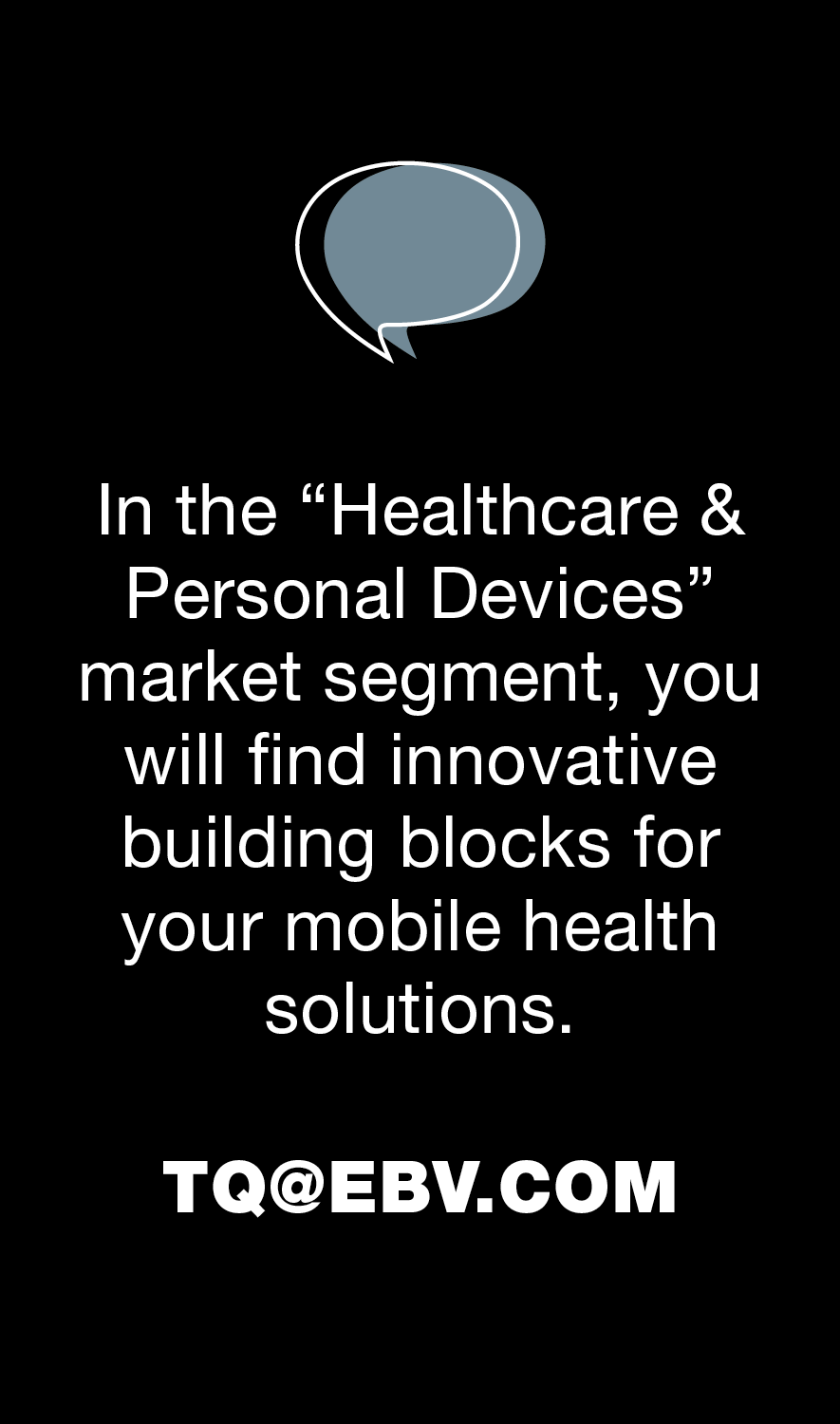New developments in health technology are increasingly being shaped by digitalisation. There is a wide range of applications for digital solutions. They not only facilitate better medical care, but they also access to healthcare in regions with limited service provision.
As smartphones are becoming increasingly widely used and Internet connectivity is advancing, the health system is changing. Mobile health technologies (mHealth) are gaining increased acceptance among doctors and patients alike. Particularly in remote patient care, wearables can acquire data in real time, improve accuracy and make it easier to make decisions.
One example is Probeat, a wearable, non-invasive glucose measuring device from Nemaura Medical. The device uses AI algorithms to give the user feedback, allowing them to actively influence their blood-sugar level. The app also enables data from wearable fitness devices from other manufacturers to be integrated, providing more accurate and more comprehensive acquisition of different relevant factors.
What makes the product Probeat?
But more consumer products such as wearables also feature progressively more physiological measuring technology. A study by Stanford University showed that a mobile app using the data of the heart rate and pulse sensor can reliably detect atrial fibrillation. “The results of the Apple Heart Study highlight the potential role that innovative digital technology can play in creating more predictive healthcare,” said Lloyd Minor, dean of the Stanford School of Medicine. “Atrial fibrillation is just the beginning, as this study opens the door to further research into wearable technologies.”
It’s not just people in wealthy industrialised countries who are benefiting from this development. “Almost everything that we do now is digital,” emphasised Dr. Deborah Maufi, project manager at the Health[e]Foundation. “Even in developing countries. You see the economy’s very low, but people still have access to smartphones.”
Maufi developed an app called MyHealth@Hand, which enables pregnant women in Africa to get in touch with medical professionals. “They can share health data and also the woman has access to health information about pregnancy and the newborn,” Dr. Maufi said. Pregnancy and childbirth exact a high toll in developing countries. Worldwide, almost 380,000 women die every year because of uncertainty and incorrect information about preventable causes relating to their pregnancy.
New opportunities from 5G
The new 5G mobile communications standard plays a significant role in digitalisation in healthcare. The real time capability of 5G and the associated minimal response times mean that video consultations and remote treatment are possible. In Finland, there have already been experiments involving outpatient stroke rehabilitation.
Another medical application that is only conceivable thanks to 5G is telesurgery. An estimated 143 million operations per year worldwide are not carried out because there are not sufficient experienced surgeons. As part of the “Remote Surgeon” pilot project from Vodafone, a specialist surgeon who is not physically present guides another surgeon through the procedure in real time. And he can be working in any operating theatre in the world.
No telehealth without cybersecurity
“New telemedical applications make so many things easier for patients. However, there are threats due to possible cyberattacks. And not just relating to data protection, as can be illustrated using the example of remote controlled infusion pumps”, warns Carlos Moreira, Founder and CEO of WISeKey. His company develops modules that provide effective cyber security in healthcare.
Cyber security begins with the mHealth device itself. If it’s equipped with a secure element, the data is protected at source. So it can be transmitted to a gateway via a wireless connection in encrypted form with a digital signature. The gateway is also equipped with a secure element, enabling secure transmission of data to the server via the 5G network. Here, the medical data is saved in encrypted form. If the data has to be continuously available, Blockchain technology can ensure a high level of security. But the first and last protective barrier is always the doctor, who knows best when something is not right.



